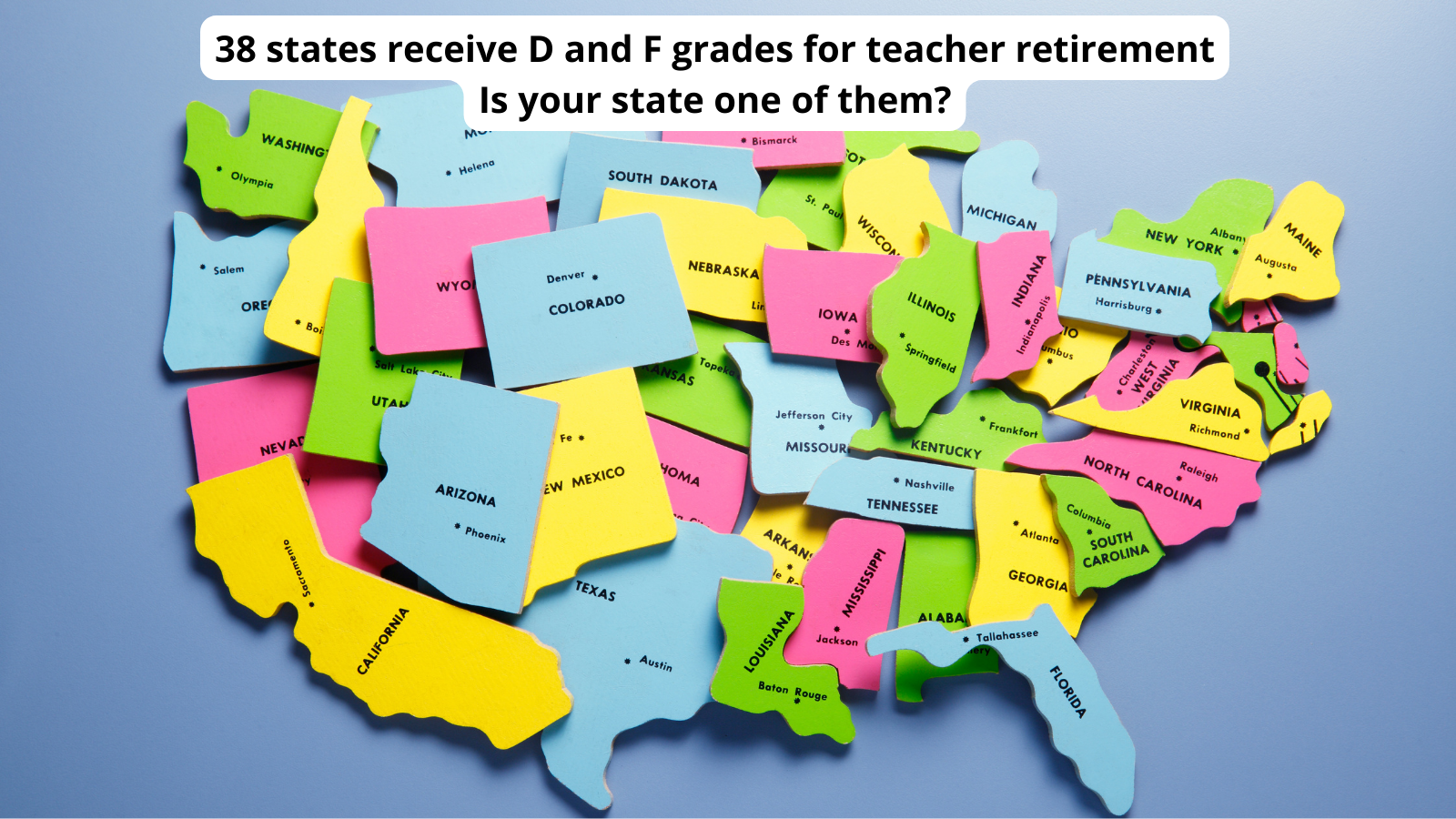
You’re probably going to need another source of retirement funds.

If states received a grade based on how strong their state pension plans are for educators, a large majority would get an F. (To be specific, 20 states received an F overall.) This might come as a surprise to many. After all, isn’t there supposed to be a tradeoff with teaching? You know, you take a smaller salary and work for the public, but you’ll be rewarded in the way of good benefits and retirement. Isn’t this how it should be?
This is how it worked for my mom, who retired a few years ago after 30+ years of working in the same school system in Oklahoma. But the problem is, the modern teacher isn’t like my mom’s generation. So in turn, the current retirement system is failing a lot of our educators.
“We have a system that’s designed for the 30-year teacher who stays in the same spot their entire careers, but that’s not the case anymore,” says Andrew Rotherham, co-founder of the nonprofit Bellwether.
Andy is one of the authors of the research report “Teacher Retirement Systems: A Ranking of the States,” which Bellwether released in 2021. The report gives most states a C or worse for teacher retirements and pensions, so we wanted to dig in to better understand why. The results are at once complicated and simple.
For the purpose of the research report, Andy and his colleagues wanted to differentiate between the short-term and long-term educator. Essentially, short-term teachers usually stay fewer than 10 years in a specific district, state, or position. This is compared to long-term teachers, who often spend their entire career in one position and in one retirement system. Here’s a closer look at how Bellwether defined their groups for the research:
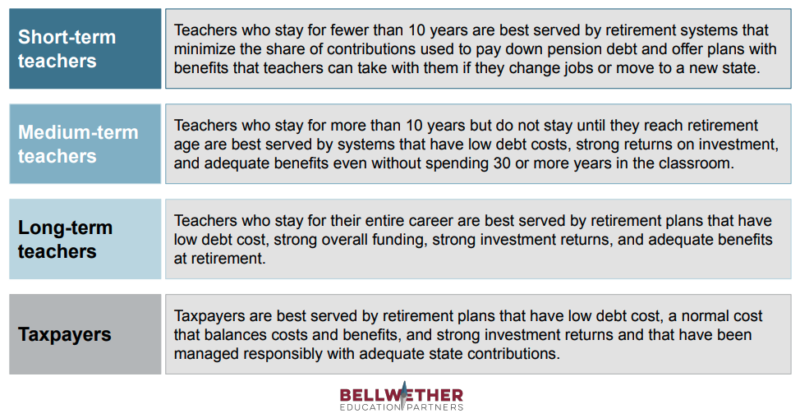
You can get a deeper look at their work and analysis for each group from the full report here. But basically, the Bellwether team assigned a point system based on variables like vesting period, teacher contribution rate, and more. Actually, their system was pretty advanced since teacher retirement systems are pretty complex and vary quite a bit from one state to another.
By the end, they figured out a traditional A through F letter grade system to assign each state. Then they reran those grades based on different factors like short-term and long-term teachers.
If you want to see how your specific state ranked on every single criteria, definitely check out the Bellwether full report. You can tell so much thought went into it, and while the state-by-state report doesn’t start until page 33, it’s worth it. For a high-level look at the rankings, here’s a breakdown.
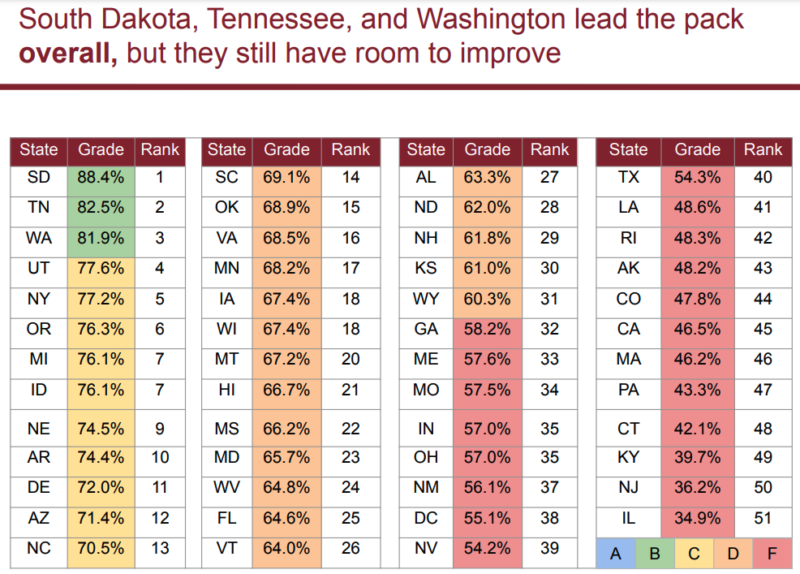
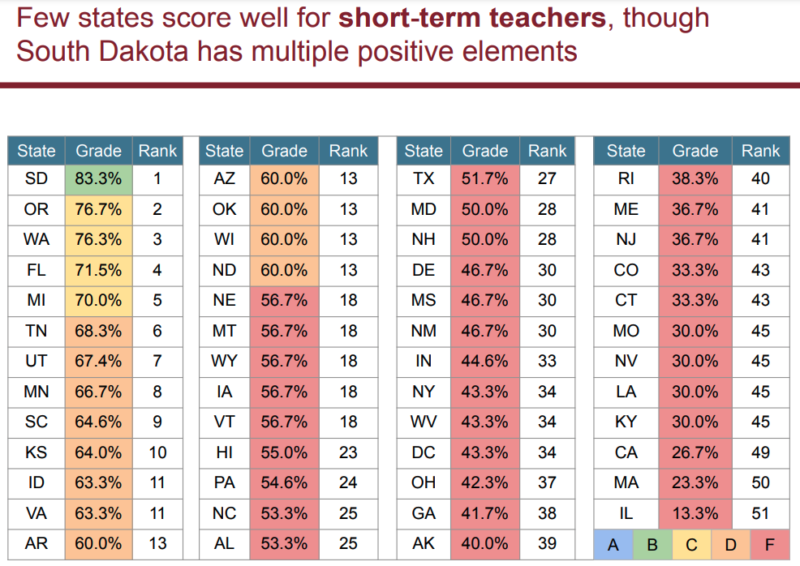
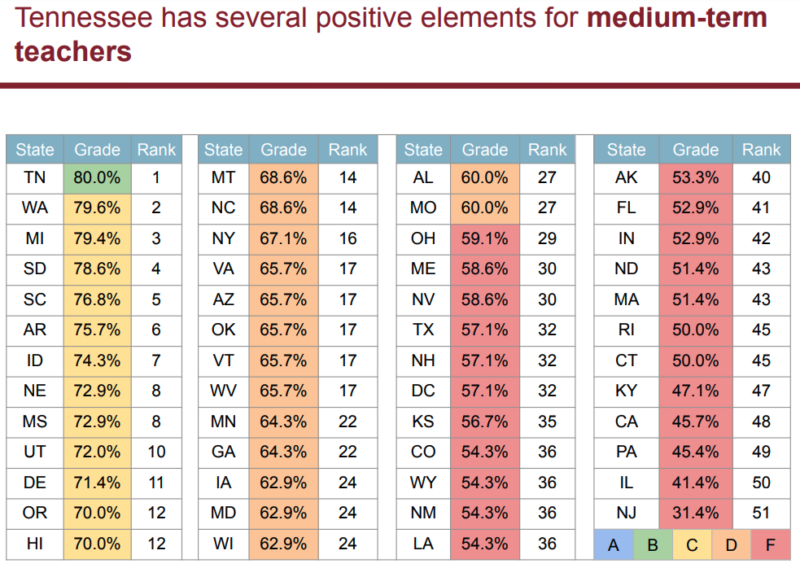
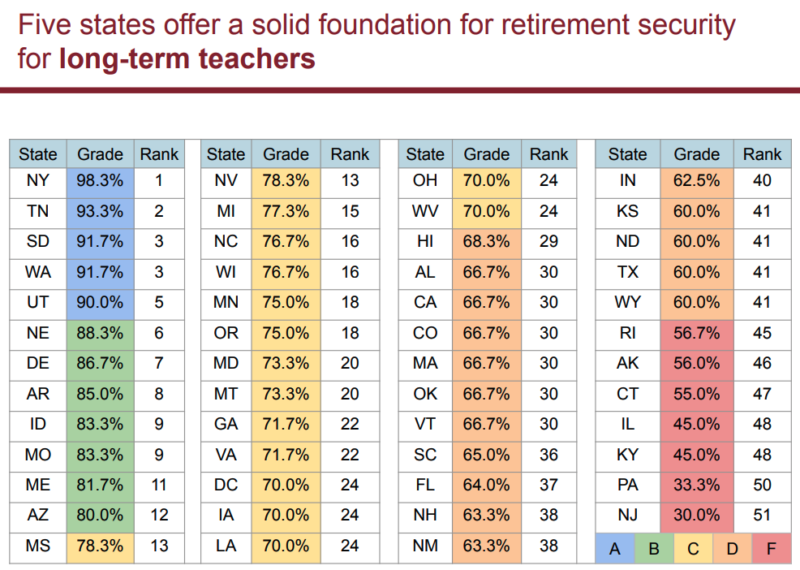
Andy Rotherham with Bellwether hopes this report helps advance conversations and efforts around teacher pensions and retirements.
“Only about one in five teachers will get their full pension,” he says. “For most teachers, they are not getting these big pensions. They’re not getting much pension at all. And if the system is not working for a lot of educators, we need a new system.”
ADVERTISEMENTAndy says they will continue to push for pension reform. But at the very least, they want educators to be aware of what’s at risk for their future.
If you’re a teacher who is unsure whether this impacts you, or you just want to understand teacher pensions more, check out this great YouTube video from the organization Teacher Pensions.